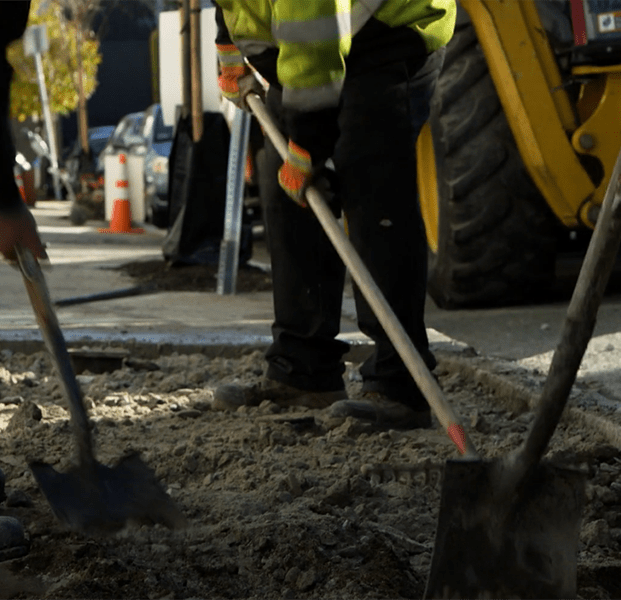Here’s a startling fact: more than half of opioid-related overdose deaths occur after a work injury.* That statistic alone is clear evidence of what we already know – that opioids are a workplace problem. And that’s a problem for everyone:
- Individuals are less likely to seek treatment for pain and injury
- Providers are challenged to properly address opioids and other substance use disorders
- Employers don’t know how to talk about opioids and their connection to workplace pain
It’s no surprise that the occupations with the highest rate of opioid overdose typically have the greatest physical demands and the lowest access to paid sick leave. When “just push through the pain” is the only way to keep your job, salary, and health insurance, opioids have too often seemed like the only solution.
Short-term opioid use can be appropriate for acute pain, like after a serious injury or surgery. But pressure to return to the job quickly can lead people to use opioids for longer periods, masking the pain so they can do their job – and of course, risking aggravating the underlying injury.
The addictive nature of opioids means that treating physical pain can often morph into recreational use, medicating emotions, or maintaining the chemical dependency caused by opioids. Ironically, doing so increases the risk of job loss for other reasons beyond the original injury and pain.
Protecting workers from their own job requirements
Employers are required to protect their workers from injury. But beyond their obligations, employers have an opportunity – to make a difference in the fight against opioids, by reducing the occurrence of workplace injuries that can lead to their use. Rebecca Fuentes, Assistant Commissioner of Cambridge Public Works (CPW), saw the problem in her own workplace and decided to take action.
Cambridge Public Works has around 250 employees with responsibilities that include solid waste collection, street cleaning, snow removal, tree-trimming, park maintenance, and similar tasks. The work is physical and repetitive, and can lead to back problems, soft tissue injuries, and more.
Rebecca recognized that these types of injuries required employees to be out for a long time, and they can be hard to rehabilitate. Knowing full well that pain and injury are natural gateways to opioid use, she asked herself this key question: “What can we do earlier?”
That is: How could CPW shift to preventing employee injury, instead of dealing with it after the fact?
Preventing pain by preventing injury
To begin to address the root causes of pain and injury, CPW hired national ergonomics consulting firm The Posture People. After all, ergonomic approaches in the workplace can help prevent exactly the sorts of injuries that lead to opioid use, not to mention increasing overall employee health.
Shani Soloff, Founder and CEO of The Posture People, is all too familiar with workplace injury. Her sessions with groups of CPW employees included functional training on body mechanics and adjusting how they move through their tasks.
Shani also provided engineering suggestions that redesign how CPW employees approach physical tasks in the first place, with the following goals:
- Protect the body
- Reduce repetitive stress and strain
- Decrease the likelihood of injury
Classes are targeted to the group they’re teaching at any given time, focusing on their specific tasks and methods to perform them more safely.
Let’s face it: companies, organizations, and employers of all types are focused on productivity, because they have to be. But making injury prevention a priority as well can save a lot of money – a win-win for both employer and employees.
But the changes have been more than just physical and procedural.
They’re cultural too.
Ken discovered that a bit of explanation is all it took. In candidly discussing the reasons, he was able to explain that it’s not just “because I said so,” nor is it a dig at employees’ strength and fortitude.
Small changes can make a big difference
Just ask Ken Bergeron, Safety Officer for CPW, who spearheaded the injury prevention program alongside Fuentes. He asked The Posture People to create customized interventions specific to CPW employees.
The firm helped CPW consider and implement simple modifications, like adding handles or steps to a truck. Similarly, the team found opportunities for process improvement – pumping water from enormous containers, instead of employees lifting and emptying full tanks on their own.
The changes made a noticeable difference, reducing the occurrence of the specific injuries that had so often plagued CPW workers.
In short, CPW is simply doing the right thing.
Fewer accidents, greater supports
Like many others, CPW employees and their families have experienced the toll of the opioid epidemic. But Rebecca is impressed by the changes she’s seen at CPW.
Not only are there fewer accidents and injuries, but the workplace culture is such that if employees trust that if they have safety concerns, there are resources that will help. “Employees are human beings,” she notes, and they’re the most important asset in any business or organization.
More than that, CPW believes it has a broader mission as a city agency: working with employees to reduce the stigma that surrounds opioids, substance use disorder, treatment, and recovery. Today, they’re seeing a broad range of employees at all levels, stepping up and recognizing that safety is their role too – and doing what needs to be done to prevent pain and injury.
*American Journal of Public Health, 2020
